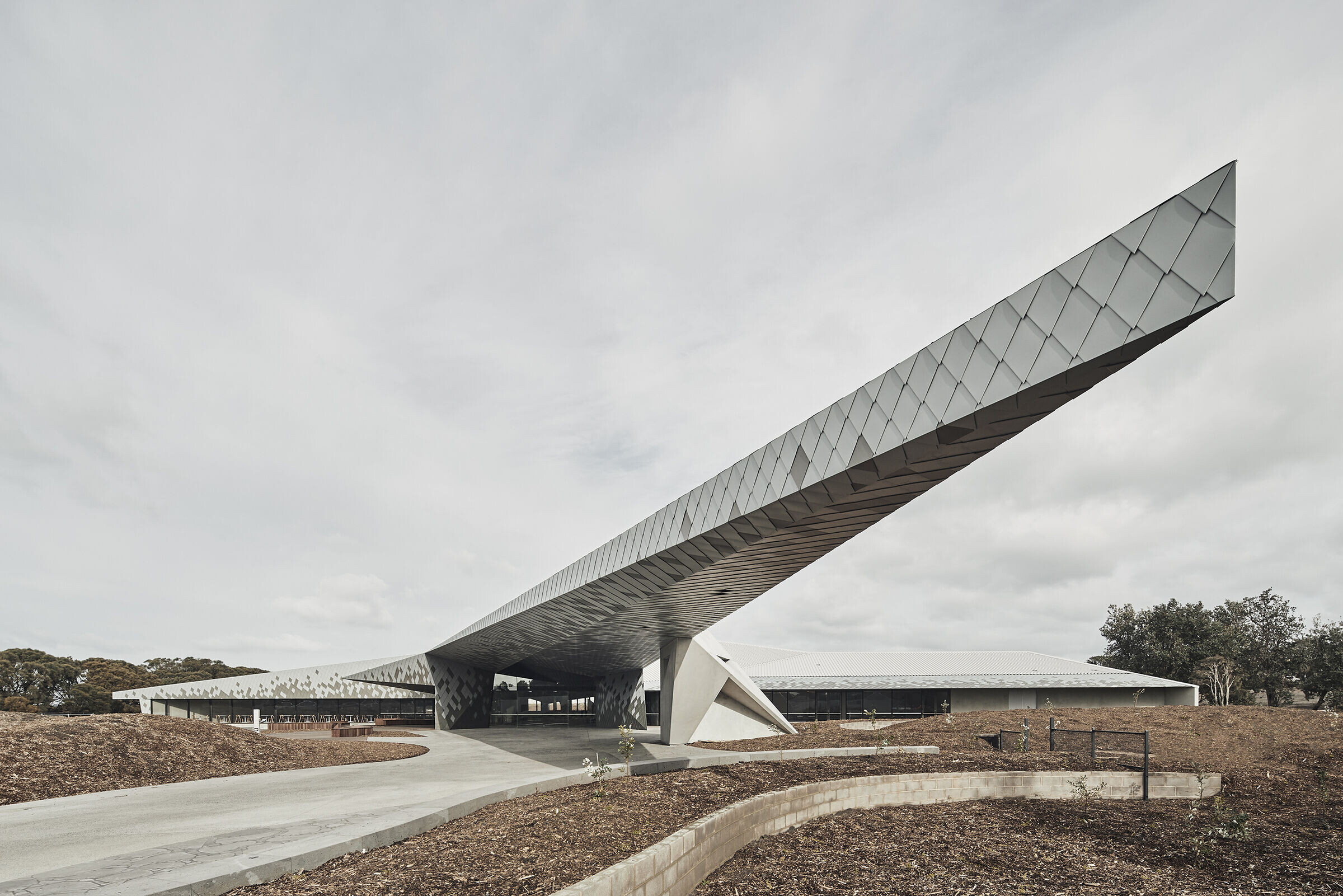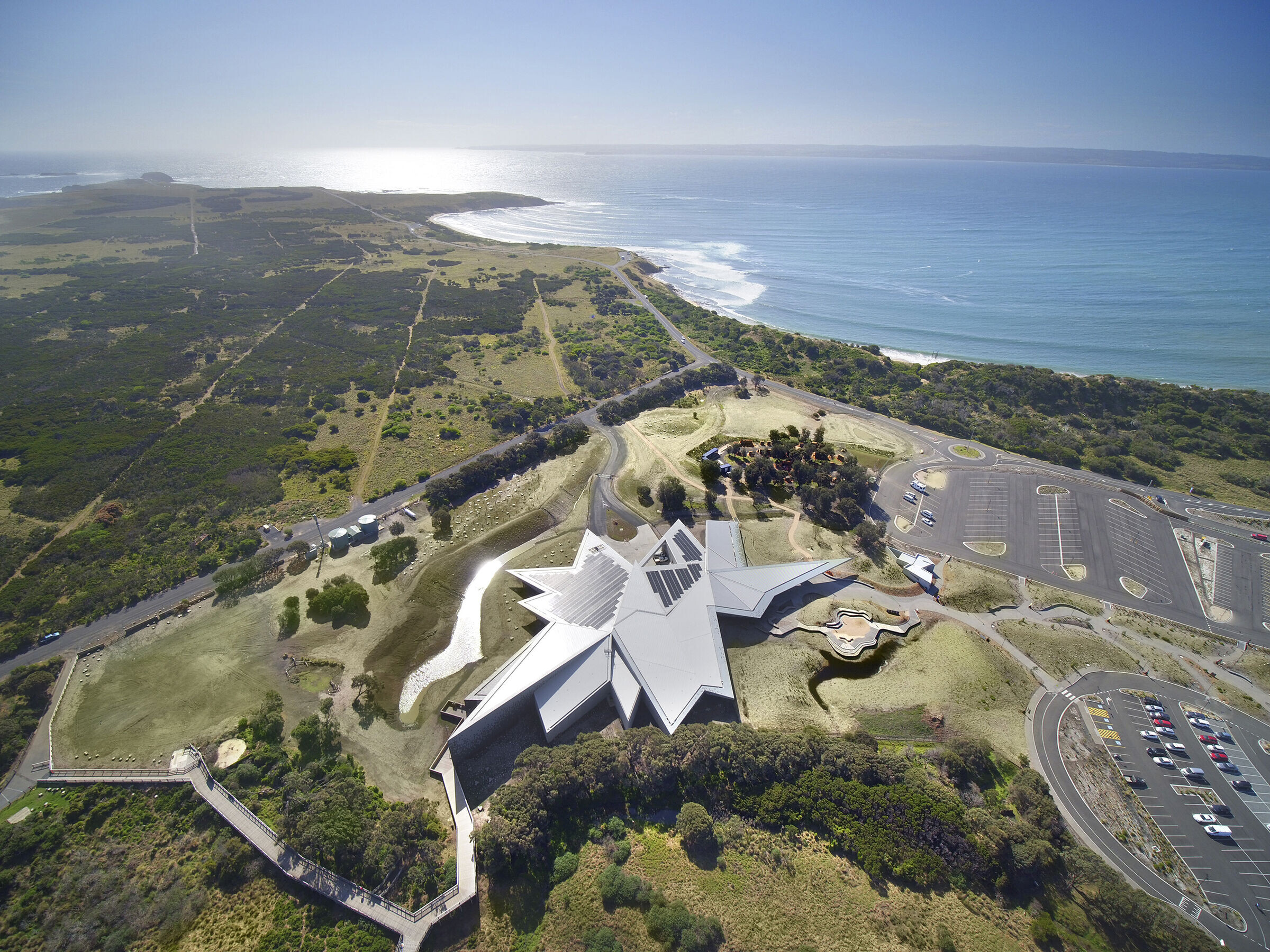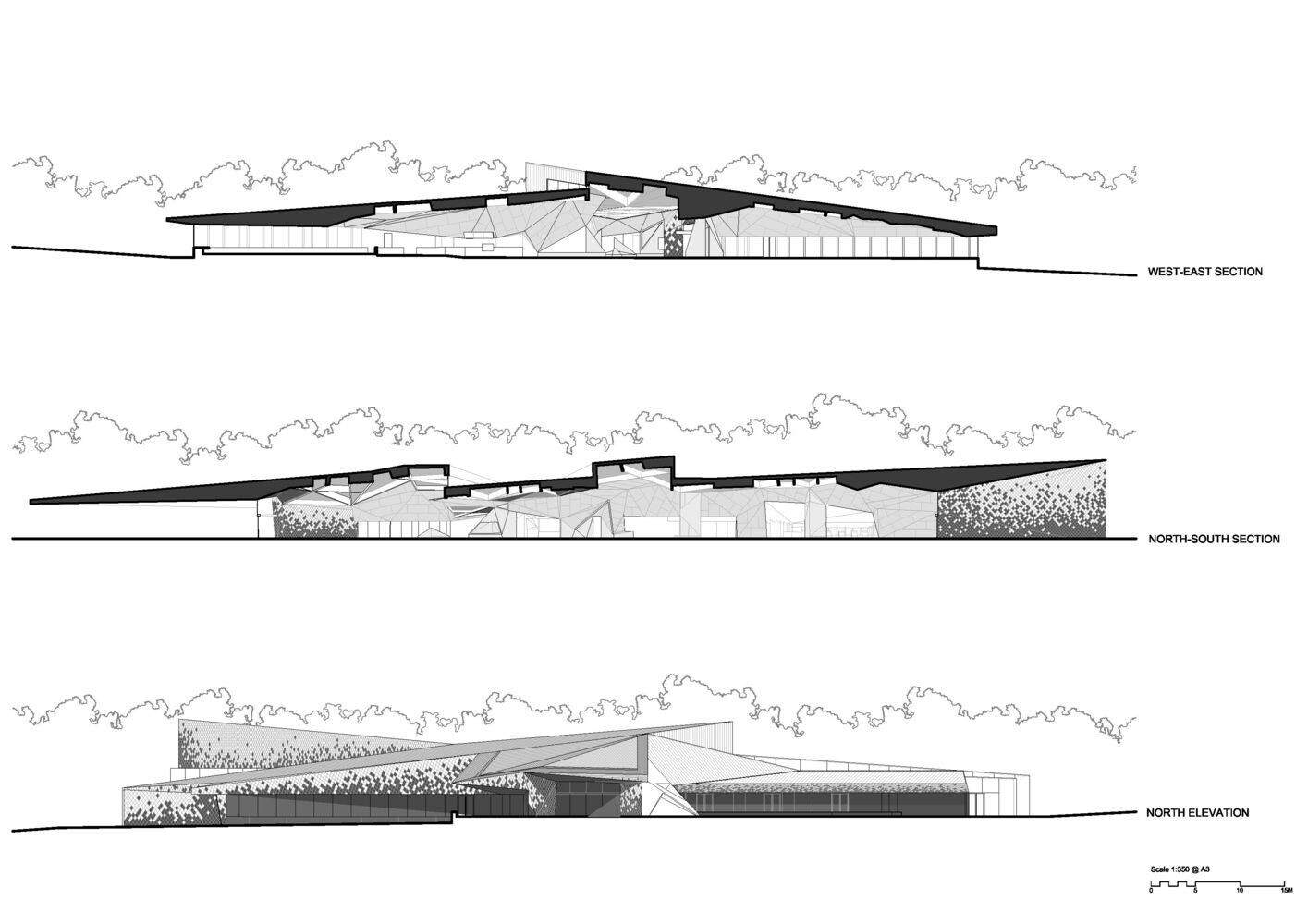The Penguin Parade on Philip Island is the most visited tourism destination in Victoria, with up to 3800 people every evening coming to see the penguins come ashore in a spectacular but sensitive landscape. At the same time, Philip Island Nature Parks has become a pre-eminent authority on care for penguins and development of penguin habitat. The story of the Nature Parks and the new building has been featured in the New York Times.


The new Visitor Centre for the Penguin Parade carries the ambitions of this tourism and conservation program across iconographic, experiential and functional contexts. The building sits at the nexus between 3 landscapes: dunes, headland and wetland, linking these landscapes like a brooch that gathers these together and responds to each in specific ways – formally and experientially. The power of the three landscapes is acknowledged in the homogenous zinc cladding to the building that increases its abstraction while providing a constant against which the three landscapes are registered.


This tough exterior is complemented by an equally robust interior consisting of exposed timber structure and plywood panels that, as with the exterior, and self-finishing materials with integral colour and texture. The interior is structured around a major circulation path that has the capacity for large crowds and which forms a spine off which are arranged a series of dedicated spaces for ticketing, education, retail and restaurants. Between the central spine and discrete functional spaces is a layered edge condition of unprogrammed and indeterminate “third spaces” which enable individual experience and interpretation that responds to these 3 landscapes and the penguin experience.






































